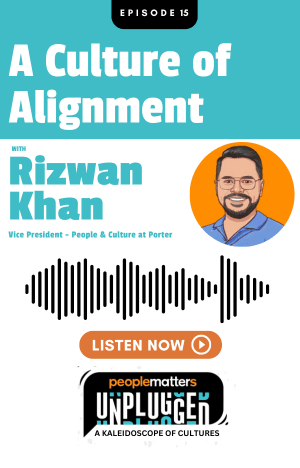War for talent - What drives your people?

Talent has always been hard to find, harder to train, and hardest to retain. The ‘War for Talent’ is not a problem of 2022 but it has simply escalated quickly to the top in the last few years. This phrase was first coined in 1997 by Steven Hankin at McKinsey. It has been spoken about for years! Every employer wants to attract, grow and retain the best talent that is available globally, but the trouble is that ‘less’ talent is available and the skilled desirable candidates are hard to find. There is a war going on.
The extremely volatile and new conditions that we have faced in the last few years have brought this challenge to the forefront. Since the beginning of the pandemic, people left jobs, changed jobs, and some even created jobs. The space that was created during these Pandemic years has led each employee to think about what they want. Do they want the perks of ping pong tables and snacks or the luxury of working from anywhere, flexible timings, high pay, etc.? The jury is still out there on this!
If there is one thing that is keeping the CEOs and the CHROs up at night, it is the talent flight risk. Imagine this, if one of your high-potential employees were to leave tomorrow, the cost to replace him/her is very high. Finding a new person, training them, and bringing them up to speed is a pain. Above that, when a high performer leaves the client relationships also suffer. Finally, others around them are now asking, “Why did they leave? Should I start looking out for a new job too?”
I am assuming that you and I are now aligned on the fact that this is a major challenge and one that should have been solved a while ago! But better late than never. As an organisation, you could be in one of these buckets -
- I recognize the problem and I am actively trying to solve it.
- I know there is a problem but I don’t know what to do.
- I will strategize and build a 3-year, 5-year, and 10-year plan!
- Talent? War? I don’t see it!
The question that arises then is how do you win this war? This war cannot be won by brute force or by building a new strategy. This war involves humans and all human beings are driven by specific needs.
A recent Harvard Business Review article observed, that rather than spending billions to acquire talent, a better approach is investing in the talent that’s already in place. “Poach-and-release is no longer a sustainable model for talent acquisition,” the authors write.
If you want to win the war for talent, you need to build an organisation where people develop a sense of belonging, feel valued, and are learning something new. Even though different things can drive each individual, we are all seeking growth, compassion, and respect at the core.
Maslow's hierarchy of needs was an idea proposed by Abraham Maslow in 1943 and holds to date! It has five levels and each level allows you to win the war for talent!
Levels 1 & 2 - The Physiological Needs and the Safety Needs will be accomplished by employees in any organisation they are a part of. They will be paid for their work, will be able to comfort their families, and have money to buy clothes and food. If you keep their motivation to this need, they would jump to another organisation without a second thought.
The differentiating factor as to how your organisation will be able to retain its employees is by creating the conditions where the next three levels of Maslow’s hierarchy will be satisfied.
Level 3 - Love and Belonging - As an organisation, create the conditions that help foster trust within employees. Use engagement methodologies to build friendship and a sense of connection among the employees. This sense of belonging was lost during the times of pandemic and hence attrition reached high percentages. The organisations that were still able to support and grow this sense of belonging were the front runners in reducing their attrition significantly.
Level 4 - Esteem - Every human being needs respect, recognition and freedom. As organisations, we need to build a culture that empowers. A culture where feedback is given with respect and an intention to grow the other person.
Level 5 - Self-actualisation - organisations have innately not been inclined towards supporting the employee’s self-actualisation goals but if you could be a pioneer in this path then your employees will be in love with you. They would not want to leave; if they do, they will champion your voice to the outside world. It is easier said than done but it is not impossible.
Now, this seems like a herculean task but through a deep reflection on the culture, the values and the learning and development opportunities you provide to your people, this is something that one can achieve and put to practice. Remember, at the core of this war for talent is the human and you need to figure out what drives the humans in your organisation!














